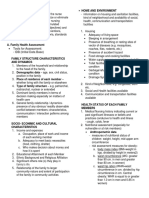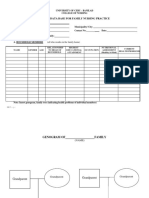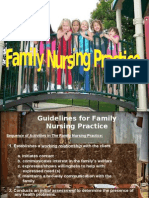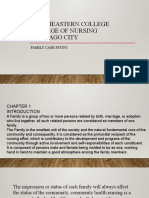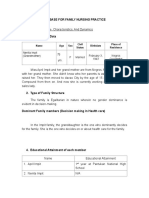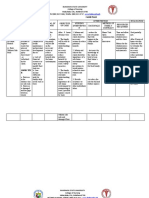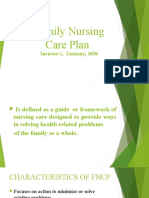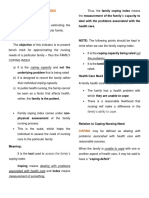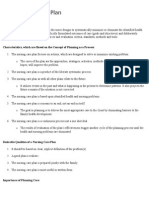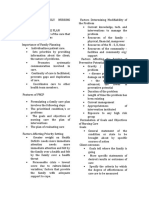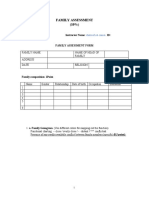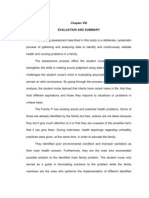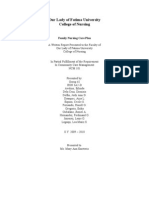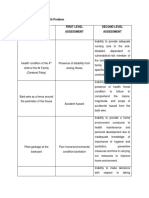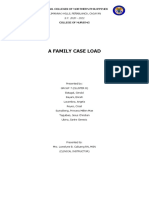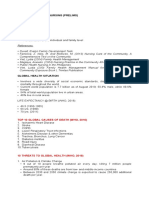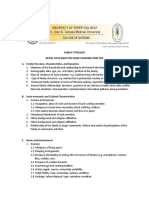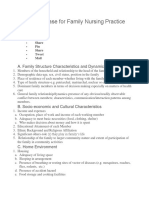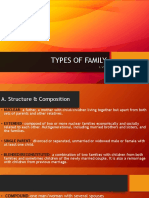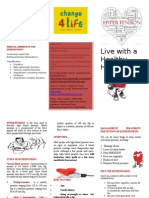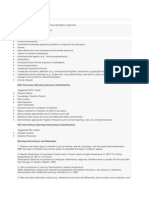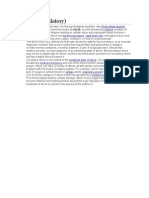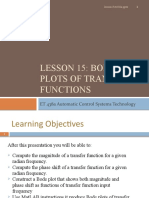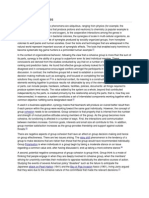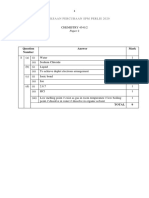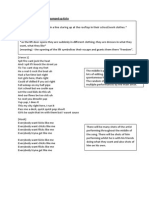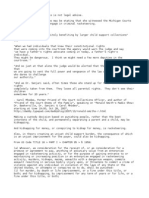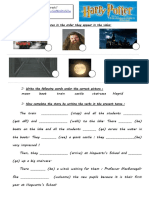0% found this document useful (0 votes)
377 views8 pagesInitial Data Base (Idb) : For Family Nursing Practice
This document outlines an initial data base assessment for family nursing practice. It identifies 5 areas to assess: 1) family structure and dynamics, 2) socioeconomic and cultural characteristics, 3) home environment, 4) health status of each family member, and 5) values, habits and practices regarding health promotion. Each area contains several sub-points to guide the nurse in collecting comprehensive information about the health and well-being of the entire family.
Uploaded by
Valiant BaybayCopyright
© © All Rights Reserved
We take content rights seriously. If you suspect this is your content, claim it here.
Available Formats
Download as PPTX, PDF, TXT or read online on Scribd
0% found this document useful (0 votes)
377 views8 pagesInitial Data Base (Idb) : For Family Nursing Practice
This document outlines an initial data base assessment for family nursing practice. It identifies 5 areas to assess: 1) family structure and dynamics, 2) socioeconomic and cultural characteristics, 3) home environment, 4) health status of each family member, and 5) values, habits and practices regarding health promotion. Each area contains several sub-points to guide the nurse in collecting comprehensive information about the health and well-being of the entire family.
Uploaded by
Valiant BaybayCopyright
© © All Rights Reserved
We take content rights seriously. If you suspect this is your content, claim it here.
Available Formats
Download as PPTX, PDF, TXT or read online on Scribd
/ 8
